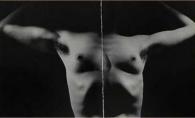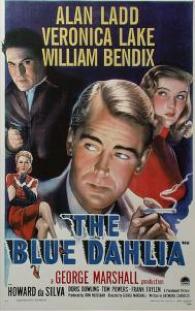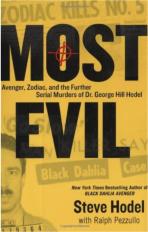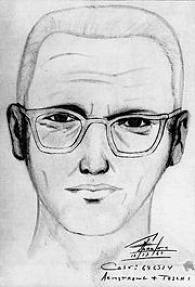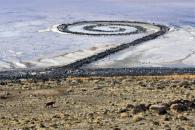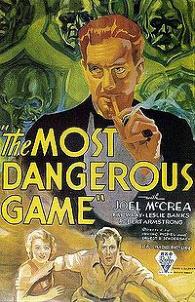§§ Is the dummy posed in the department store window art... or the dismembered body lying in the weeds beside the sidewalk? Is art an imitation of an action, or is it simply an action imitating art?
Dr. George Hill Hodel certainly enjoyed art, and if you believe the criminal bio of him created by his "favorite son" Detective Steve Hodel, LAPD (retired) in Black Dahlia Avenger (2003) and in the recent follow-up Most Evil (2009), this Renaissance Man was/is the greatest serial killer in American history, and art was his modus operandi.
The thing is, are these books fact or are they fiction... or do they blend as "faction" -- a term Steve Hodel uses to describe the contemporary detective's crime modelling method -- never conclusively becoming real? What can you believe here: that Dr. George Hill Hodel was a prolific, artistic serial killer who went to his grave in San Francisco Bay in 1999 uncaught, or that he has been framed by his own vengeful son mashing some known historical facts with some literary derivatives that add up to nothing more than a pure post-mortem mysticism? Whatever you might decide after reading these books -- especially Most Evil, which names Dr. Hodel as the real Zodiac Killer -- you will be impressed by the obsession driving Steve Hodel's argument.
At the time of the Black Dahlia murder in January 1947, who is Dr. George Hill Hodel exactly? A successful physician in charge of the Los Angeles County venereal disease unit living in a fabulous Lloyd Wright (Jr.) Mayan temple house on Franklin Avenue in Hollywood, married to Dorothy Harvey, the ex-wife of his friend the movie director John Huston, with three young boys and a daughter Tamar (from a previous liaison) in their family. Accomplished pianist, art photographer, literary magazine editor (Fantasia), occasional poet -- all these things as well as now being a successful physician and surgeon. And he's tapped into the artistic avant-garde in Hollywood, socializes with writers like Henry Miller, artists like Man Ray. He has the pad, he has the money, he has the mojo.
Yet it seems his personal life is a facade. Although his wife is still living with him and their children in this beautiful house, they have been legally separated for three years. Her son Steve describes her as a melancholy "bisexual sensualist" who has affairs, although perhaps not as many as her ex-husband George. George's bohemian depravity becomes so extreme that he's charged with incest in 1949.
Significantly, George Hodel is committed to the aesthetics of surrealism, with its Dadaist principles of totemic primitivism, expressionist nihilism, figurative deconstruction, spacial warping... surrealism, shrouded in the sexual anarchy of dream. In other words, a chop-job, or a mash-up of classicism and institutional reality, a sort of revolt-or-die credo for the modern artist pushed by the vivisectionist horror of World War and the violence of industrial speed. Surrealism. Romanticism gone amok, death by geometry.
The term comes from Appollinaire, the poet, was given ideology by Breton. The cultural status quo in post WW I Europe was stifling, artists had to push beyond the old fixed God universe into secular relativity. It was a push that had been in the making a long time. You see it in Dostoevsky, you see it Alfred Jarry. For some, the nihilism would become burn the book, burn the painting, burn the model. As the French surrealist poet and dramatist Antonin Artaud -- like Dr. Hodel, an admirer of the writings of the Marquis de Sade -- says, "We must have done with this idea of masterpieces reserved for a self-styled elite and not understood by the general public; the mind has no such restricted districts as those so often used for clandestine sexual encounters." (No More Masterpieces, 1938)
Perfect. Well said. Let's just kill the model and pose her in a public place; the public will understand that.

